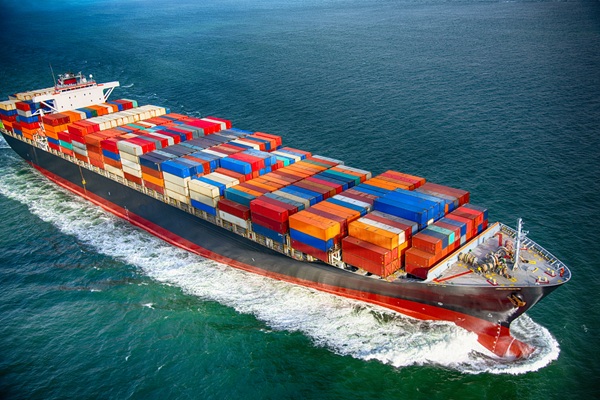.png)
March 20, 2025 at 2:31 AM IST
India’s remittance landscape is undergoing a structural shift, with remittances more than doubling over the past decade as a stable source of external financing. Though the pandemic briefly disrupted this flow, the rebound has been sharp, driven by a changing migration pattern that places skilled Indian workers at the forefront.
A paper from Reserve Bank of India staffers pointed out that in 2023-24, the share of remittances from advanced economies overtook that from Gulf nations, reflecting a long-term transformation in India’s diaspora. While the Gulf remains home to a large segment of Indian migrant workers, particularly in construction and hospitality, the rise in remittances from the United States, United Kingdom, Canada, and Australia signals a growing footprint of highly skilled professionals in these economies.
India’s share in global remittances has climbed from 11% in 2001 to 14% in 2024. World Bank estimates suggest that remittances to India will reach $160 billion by 2029, cementing its position as the world’s top recipient. This growth is driven by Indian IT and financial services professionals, the migration of students transitioning to work visas, and policy agreements such as the India-UK Migration and Mobility Partnership. The number of Indians moving to the UK tripled between 2020 and 2023, and remittances from the UK surged from 6.8% in 2020-21 to 10.8% in 2023-24.
The rising student population in Canada, the US, and Australia has further contributed to this shift. As of January 2024, Indian students abroad totalled 1.34 million, with Canada hosting the largest share at 32%. Many transition into the workforce, strengthening remittance inflows from these regions.
Cost challenge
While remittance flows remain strong, the cost of sending money home continues to be a global concern. The United Nations' Sustainable Development Goal (SDG) targets a 3% cost for remittances, but global average costs remain above 6%. India fares better, with remittance costs averaging 4.9% in 2023—below the G20’s initial target of 5%. Digitalisation and competition among fintech firms have helped lower transaction costs, but further reductions could enhance the financial well-being of recipient families.
Despite the growing role of advanced economies, the Gulf remains crucial. The United Arab Emirates continues to be the second-largest source of remittances to India, with its share rising from 18% in 2020-21 to 19.2% in 2023-24. Migrant workers in the Gulf remain a vital link in India’s remittance chain. Yet, their contributions are overshadowed by Indian professionals in the West. The US, for instance, hosts fewer Indian migrants than the UAE, but their higher wages and skilled jobs result in greater remittance volumes.
Country-wise % Share In India’s Inward Remittances
| Source Country | 2016-17 | 2020-21 | 2023-24 |
| United States | 22.9 | 23.4 | 27.7 |
| United Arab Emirates | 26.9 | 18.0 | 19.2 |
| United Kingdom | 3.0 | 6.8 | 10.8 |
| Saudi Arabia | 11.6 | 5.1 | 6.7 |
| Singapore | 5.5 | 2.4 | 6.6 |
| Kuwait | 6.5 | 1.5 | 3.9 |
| Qatar | – | 5.7 | 4.1 |
| Canada | 3.0 | 1.6 | 3.8 |
| Oman | 1.0 | 0.6 | 2.5 |
| Australia | – | – | 2.3 |
| Bahrain | 0.7 | 0.7 | 1.5 |
| Hong Kong | - | - | 1.3 |
| Germany | 0.6 | 0.6 | 1.0 |
| Belgium | 0.9 | 1.1 | 0.4 |
| Malaysia | – | – | 0.6 |
| New Zealand | 2.3 | 0.7 | 0.5 |
| Ireland | – | – | 0.4 |
| Netherlands | – | – | 0.5 |
| Japan | – | – | 0.3 |
| Switzerland | – | – | 0.4 |
| France | 0.1 | 0.1 | 0.2 |
| Italy | – | – | 0.1 |
| Indonesia | – | – | 0.2 |
| Thailand | – | – | 0.2 |
| South Africa | – | – | 0.1 |
| Spain | – | – | 0.1 |
| Others | 14.8 | 31.6 | 4.4 |
India’s remittance boom underscores a broader demographic shift. The country’s stock of international migrants has tripled since 1990, and its share in global migration has risen from 4.3% to 6%. This expansion will continue, with India projected to be the world’s largest supplier of labour until 2048.
Policymakers must focus on upskilling and reskilling to capitalise on India’s demographic dividend, the RBI paper notes. The demand for skilled Indian workers is set to persist, and ensuring their competitiveness in global labour markets will be essential for sustaining remittance flows and their impact on domestic economic stability.
Remittances are not just financial inflows—they reflect the evolving aspirations of India’s workforce. The shifting sources of remittances highlight India’s growing integration with the global economy, the rising stature of its skilled diaspora, and the changing nature of migration itself. The challenge now is to sustain this momentum and leverage India’s human capital for long-term economic gains.





